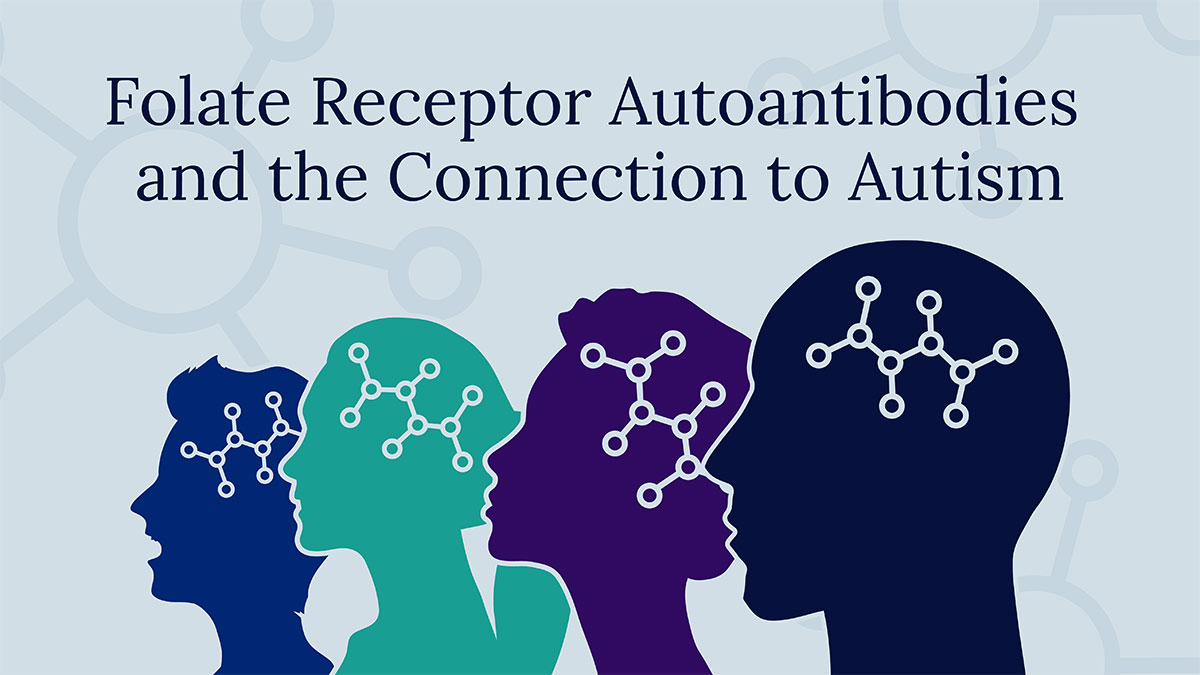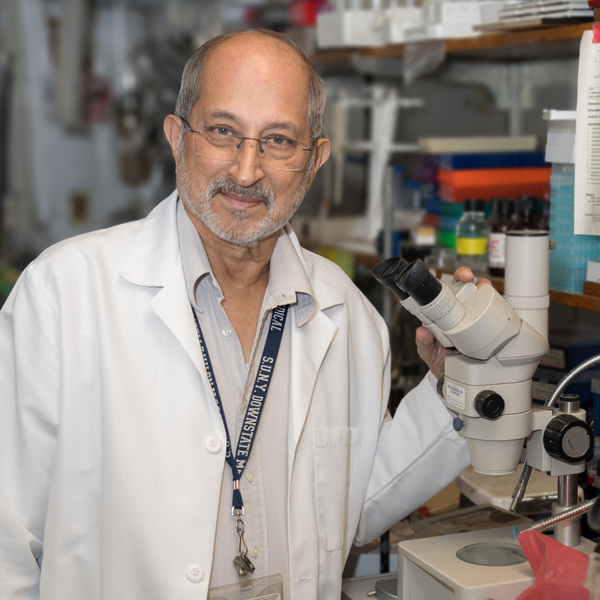Downstate Folate and Autism Research Goes National
By Office of the President | Oct 7, 2025

Recent media coverage has focused on leucovorin (folinic acid) as a possible treatment for autism. While the headlines may be new, the science behind them is not. At the heart of this story is Edward V. Quadros, Ph.D., Research Professor of Medicine and Cell Biology, with a primary appointment in Hematology/Oncology, whose pioneering research on folate receptor autoantibodies, begun in the early 2000s, has advanced the understanding of their critical role in health and disease for over two decades.

Edward V. Quadros, Ph.D.
He focused on a mystery that traditional blood tests for folate could not explain: why women with normal folate levels still gave birth to children with neural tube defects, and why children with autism spectrum disorders (ASD) often show evidence of cerebral folate deficiency.
His breakthrough came with the discovery of autoantibodies that block the folate receptor, preventing folate from reaching the fetus in neural tube defect pregnancies and from reaching the brain in children with cerebral folate deficiency. In further exploration, his team made antibodies against the rat folate receptor and introduced these into pregnant rats. At high doses, the fetuses developed abnormal brains; at lower doses, the brains appeared normal, but the offspring later showed deficits in learning and memory. These deficits could be prevented by pretreatment with folinic acid. These findings provided the first clear evidence that an autoimmune process could interfere with brain development and function.
Building on this foundation, Dr. Quadros developed the Folate Receptor Antibody Test (FRAT™). Clinically, it functions as a simple blood test. Scientifically, it reflects years of complex laboratory development. The test, now licensed by the SUNY Research Foundation to Religen Inc., is designed to replace painful spinal taps and offers clinicians a powerful diagnostic tool to identify children and women at risk. In 2011, his efforts gained support from the SUNY Technology Accelerator Fund, advancing the test toward broader clinical use.
Collaborations with researchers worldwide have also strengthened his work. He first partnered with Professor, Vincent Ramaekers, a pediatric neurologist at the University of Aachen in Germany, and later at the University of Liège in Belgium. He then worked with Richard Frye, M.D., Ph.D., a neurologist and autism specialist in Arizona, to design rigorous, double-blind, placebo-controlled trials. These studies demonstrated that about 70 percent of children with autism spectrum disorder tested positive for folate receptor autoantibodies and that treatment with high dose folinic acid improved core symptoms, including language, learning, and social interaction.
Closer to home, Dr. Quadros collaborated with Downstate pediatric neurologist Harris Huberman, M.D., and Dr. Frye on the clinical trials. Dr. Huberman has since brought young physicians into the Leadership Education in Neurodevelopmental and Related Disabilities (LEND) program, ensuring that new discoveries translate into both training and patient care. Along the way, Dr. Quadros’s research drew support from the NIH, Autism Speaks, the Brain Foundation, and the Research Foundation of SUNY, underscoring the importance of partnership and investment in moving science from the laboratory to the clinic.
The surge of media attention, including CNN, Reuters, Medscape, The Wall Street Journal, The New York Times, and more than 50 other outlets, has brought Dr. Quadros’s work into the public eye. Behind the headlines are decades of rigorous research, carefully built models, a relentless pursuit of funding, and collaborations that have validated the science.
The journey of leucovorin and the FRAT™ test reflects how Downstate faculty drive discoveries with impact far beyond Brooklyn. What began as a fundamental question about folate’s role in pregnancy and brain development has become an international diagnostic tool and a potential treatment pathway for children with autism.
As media debates continue, Downstate’s contribution stands out: the basic science research and collaborative clinical studies that laid the foundation for today’s conversation. Dr. Quadros’s work is a reminder that research at academic medical centers often unfolds over many years, signifying the power to transform lives worldwide.
Tags: Research